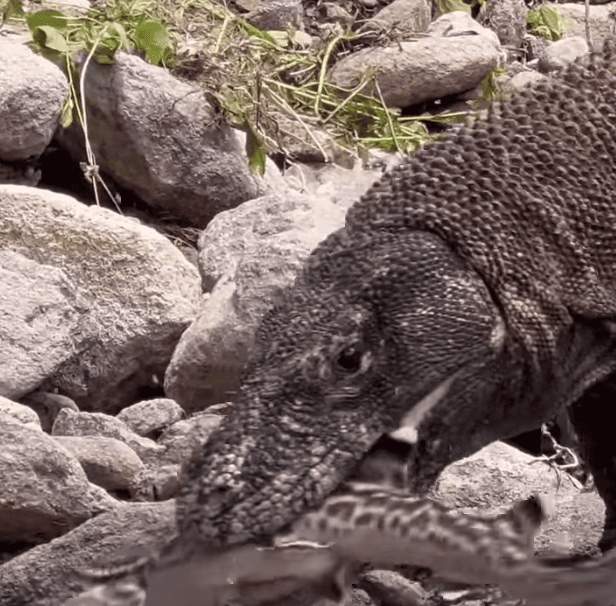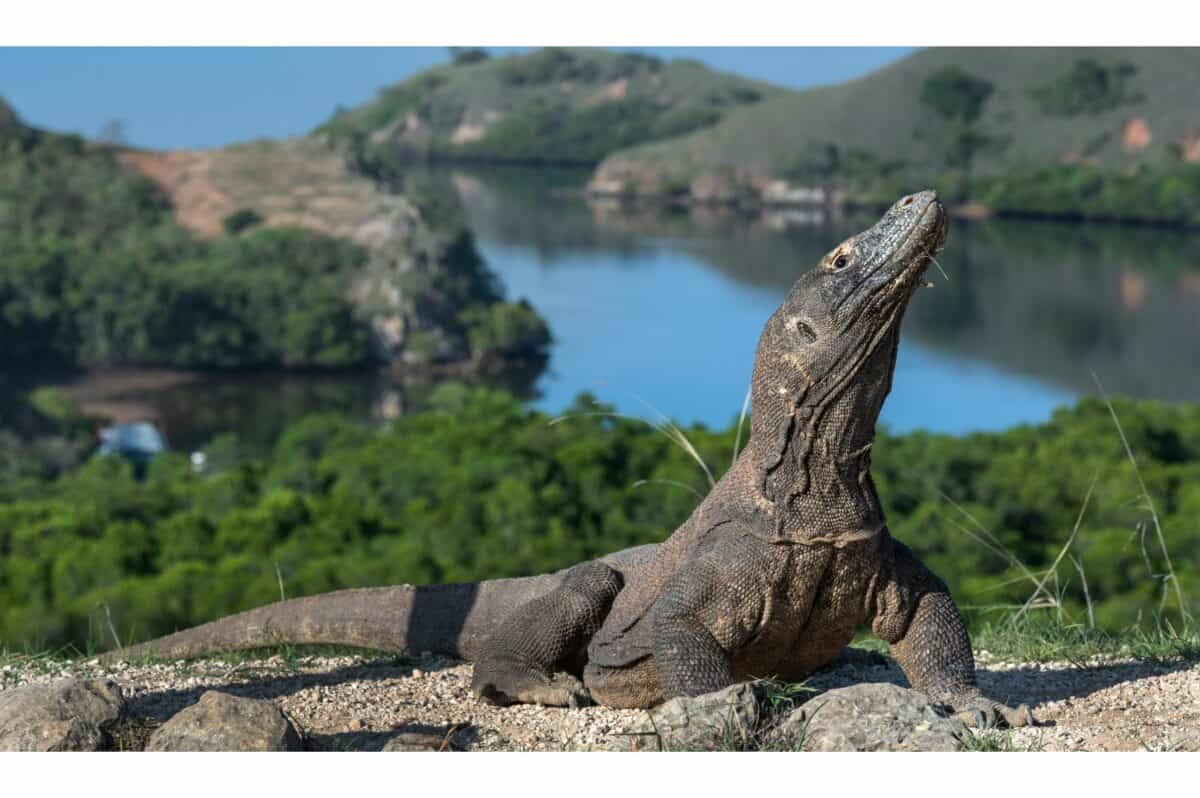Komodo dragons, the world’s largest living lizards, are a fascinating species that capture the imagination with their prehistoric appearance and formidable presence. However, their notoriety extends beyond mere appearances. These magnificent creatures possess a range of characteristics and behaviors that make them far more dangerous than one might assume at first glance. This article delves into the hidden dangers of Komodo dragons, exploring the various aspects of their existence that contribute to their lethal reputation.
Majestic Giants of the Reptilian World

Native to a few Indonesian islands, Komodo dragons are the largest lizards on Earth, growing up to ten feet in length and weighing over 150 pounds. Their sheer size alone can be intimidating, but it’s only a part of what makes these reptiles a force to be reckoned with. Their muscular bodies and strong tails serve as formidable weapons, capable of knocking down prey and even human adversaries.
A Remarkable Hunting Strategy

Unlike many predators that rely on speed or camouflage, Komodo dragons use a unique blend of stealth, patience, and ambush tactics. They can stalk their prey quietly, waiting for the perfect moment to strike with startling speed. This effective combination makes them notoriously successful hunters in their natural habitat.
The Power of a Venomous Bite

While once believed to solely rely on bacteria carried in their saliva to incapacitate their prey, recent studies have revealed that Komodo dragons possess venom glands that can deliver a complex mix of toxins. These toxins can induce shock, lower blood pressure, and prevent blood clotting, ensuring that even if the prey escapes initially, it won’t make it far.
Keen Sense of Smell

Komodo dragons have an incredible sense of smell, capable of detecting blood and decaying flesh from miles away. Their powerful olfactory abilities enable them to track down weakened or deceased animals, ensuring they make the most of every hunting opportunity.
Cannibalistic Tendencies

In the harsh ecosystems where they reside, resources can be scarce. Komodo dragons are known to resort to cannibalism when food is limited, sometimes preying on younger or weaker members of their species. This survival strategy showcases their adaptability but also adds an element of danger to their interactions with one another.
Unrivaled Agility and Speed

Despite their size, Komodo dragons are surprisingly agile and swift. They can sprint at speeds of up to 13 miles per hour in short bursts, which allows them to pounce on unsuspecting prey with minimal warning. Their ability to move quickly also makes them difficult to evade once engaged in pursuit.
A Relentless Pursuit of Prey

Once a Komodo dragon marks a target, it typically does not give up until it has secured its meal. They are known to stalk injured animals across challenging terrains for days. This persistence is a testament to their effective survival strategies and determination.
Concealment in Plain Sight

With coloration that blends seamlessly with their environment, Komodo dragons can remain hidden in the wild despite their enormous size. This camouflage allows them to launch surprise attacks on unsuspected prey, emphasizing their role as stealthy predators.
Potential Threats to Humans

While attacks on humans are rare, they do occur and can be fatal. Some villagers on Komodo Island consider these creatures protective spirits, yet acknowledge the clear and present danger they pose. Human encounters can escalate if a dragon feels threatened or if its territory is encroached upon. Awareness and respect for these creatures’ boundaries are critical for safety.
Imposing Dominance over Territory

Komodo dragons are territorial animals, and they do not welcome intruders lightly. They use their size and strength to establish dominance over their hunting grounds, often engaging in physical combat with other dragons to defend their territory. This behavior underscores the importance of maintaining a safe distance when encountering these impressive lizards in the wild.
Conservation Concerns

With growing threats from habitat loss and human encroachment, the survival of Komodo dragons is becoming precarious. Conservation efforts focus on protecting their natural habitats and ensuring sustainable coexistence with the human populations living nearby. These initiatives are vital to preserving the unique ecological role Komodo dragons play in their environment.
The Mesmerizing Yet Menacing Reality

Komodo dragons are truly a paradox: both captivating and potentially perilous. Their evolutionary adaptations have ensured their place as apex predators on their islands, but these same adaptations make them extremely dangerous. Understanding and respecting these potent reptiles is essential not only for those venturing into their territories but also for ensuring their continued survival in our world’s diverse tapestry of life.
In conclusion, Komodo dragons embody a complex mix of danger, intrigue, and ecological importance. This article has explored the less obvious, yet equally daunting, aspects of their nature. By recognizing and respecting their potential, we can appreciate these magnificent creatures for their unique place in the natural world.
- America’s Most Endangered Mammals And How to Help - August 9, 2025
- The Coldest Town in America—And How People Survive There - August 9, 2025
- How Some Birds “Steal” Parenting Duties From Others - August 9, 2025

